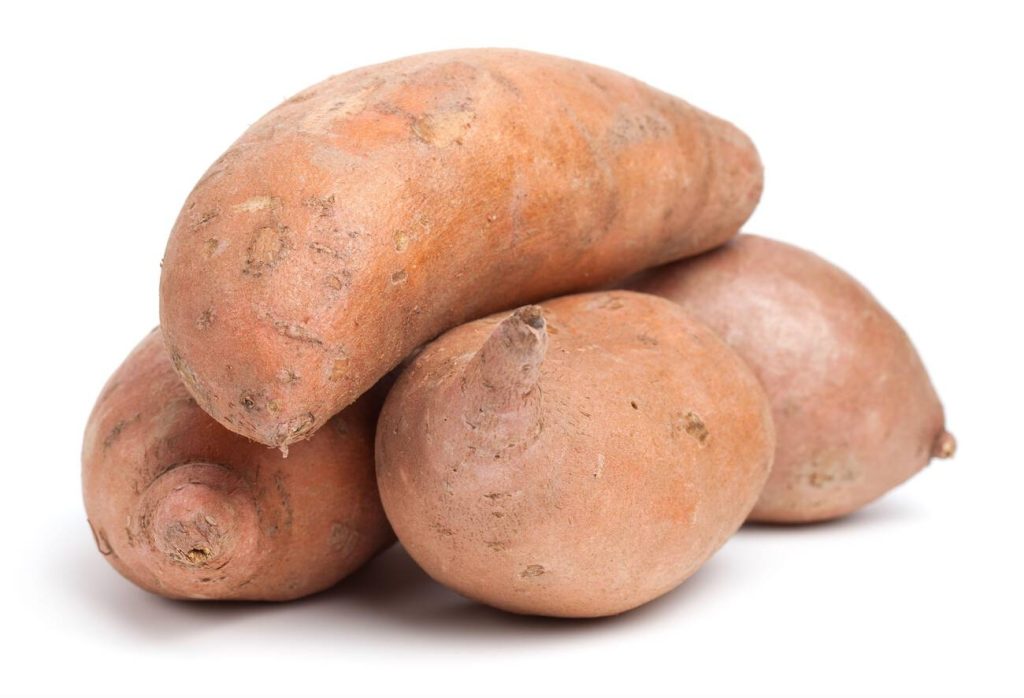Sweet potatoes are not only delicious but also packed with nutrients. They’re classified as root vegetables and belong to the morning glory family. These bad boys are loaded with fiber, vitamins A, B6, and C, plus potassium. And guess what? Unlike regular potatoes, sweet potatoes have a lower glycemic index, making them a great choice if you’re watching your blood sugar levels. So get ready to learn more about these versatile spuds and how you can incorporate them into your diet for some healthy goodness!
The Botanical Classification of Sweet Potatoes
Sweet potatoes, which are part of the morning glory family, belong to a different plant family than regular potatoes. In terms of botanical classification, sweet potatoes are classified as Ipomoea batatas, while regular potatoes belong to the Solanum tuberosum species. Sweet potatoes have been cultivated for thousands of years and are believed to have originated in tropical America. They come in a variety of colors such as orange, yellow, white, red, and purple. This wide range of colors adds diversity and visual appeal to dishes. When it comes to culinary versatility, sweet potatoes can be baked, boiled, roasted, or steamed and used in various recipes like pies, casseroles, fries, and chips. In terms of nutritional comparison with regular potatoes, sweet potatoes tend to be higher in vitamin A content and lower in calories and carbohydrates. However, both types provide fiber and essential nutrients that can contribute to a healthy diet.
Nutritional Profile and Health Benefits of Sweet Potatoes
When it comes to their nutritional profile, sweet potatoes are packed with essential vitamins and minerals. Here is a breakdown of the nutritional value and health benefits of sweet potatoes:
- Nutritional Value:
- Sweet potatoes are rich in vitamins A, C, and B6.
- They also contain potassium and dietary fiber.
- Sweet potatoes have antioxidant properties due to their high beta-carotene content.
- Weight Loss:
- Sweet potatoes can be part of a weight loss diet when included as part of a balanced meal plan.
- They provide satiating fiber and fewer carbohydrates compared to white potatoes.
- Cooking Methods:
- Sweet potatoes can be baked, boiled, roasted, or steamed.
- Boiling or baking sweet potatoes is considered healthier than frying.
- Experimenting with different seasonings and spices can enhance their flavor.
Incorporating sweet potatoes into your diet can provide numerous health benefits while adding variety to your meals.
Glycemic Index and Blood Sugar Effects of Sweet Potatoes
To manage your blood sugar levels, it’s important to be aware of the glycemic index and how it affects you when consuming sweet potatoes. The glycemic index is a measure of how quickly a food raises your blood sugar levels. Sweet potatoes have a medium to high glycemic index, ranging from 44 to 94. This means that they can cause a moderate to significant increase in blood sugar levels after consumption. However, the impact can vary depending on cooking methods and portion sizes. Boiled sweet potatoes have a lower glycemic index compared to baked ones. It’s also important to consider portion sizes and pair sweet potatoes with lean proteins and non-starchy vegetables to minimize the blood sugar effects. Monitoring carbohydrate intake is especially crucial for individuals with diabetes or blood sugar issues. By being mindful of these factors, you can enjoy the nutrient content of sweet potatoes while managing your blood sugar levels effectively.
Incorporating Sweet Potatoes Into a Balanced Diet
You can incorporate sweet potatoes into a balanced diet by utilizing different cooking methods, such as baking or boiling, and pairing them with lean proteins and non-starchy vegetables. Here’s how:
- Try different cooking techniques: Bake sweet potato fries for a crispy and healthy alternative to regular fries. Boil sweet potatoes to retain their natural sweetness and nutrients.
- Pair with lean proteins: Add grilled chicken or fish to a roasted sweet potato salad for a satisfying and nutritious meal. The combination of protein and fiber from the sweet potatoes will keep you feeling full.
- Include non-starchy vegetables: Create a colorful stir-fry by sautéing sliced sweet potatoes with broccoli, bell peppers, and onions. This adds variety to your plate while providing additional vitamins and minerals.
Culinary Uses and Tips for Cooking With Sweet Potatoes
Cooking with sweet potatoes offers a variety of culinary uses and tips to enhance your meals. Sweet potato recipes can range from savory dishes like roasted sweet potato wedges to sweet treats like sweet potato pie. There are also different varieties of sweet potatoes, each with its own unique flavor and texture. Some popular types include the Beauregard, Garnet, and Japanese sweet potatoes. When it comes to cooking techniques, you can bake, boil, roast, or steam sweet potatoes depending on your preference. As for toppings, you can get creative by adding ingredients like cinnamon and maple syrup for a delicious twist. Sweet potatoes can be incorporated into various meal ideas such as salads, soups, or even as a substitute for regular potatoes in mashed dishes. With these tips and ideas in mind, you’ll have no shortage of ways to enjoy the versatility of sweet potatoes in your cooking.
| Sweet Potato Recipes | Sweet Potato Varieties |
|---|---|
| Roasted Wedges | Beauregard |
| Mashed Potatoes | Garnet |
| Sweet Potato Pie | Japanese |
| Sweet Potato Cooking Techniques | Sweet Potato Toppings |
|---|---|
| Baking | Cinnamon |
| Boiling | Maple Syrup |
| Roasting | Marshmallows |
Sweet Potato Meal Ideas:
1) Sweet potato hash with eggs
2) Stuffed sweet potatoes with black beans and avocado
3) Sweet potato curry
4) Grilled sweet potato skewers
5) Sweet potato pancakes
Get creative with your cooking and explore the many possibilities that come with incorporating sweet potatoes into your meals!
Considerations and Precautions When Consuming Sweet Potatoes
When incorporating sweet potatoes into your diet, it’s important to be mindful of their carbohydrate content and monitor intake for individuals with diabetes. Here are some considerations and precautions to keep in mind:
- Monitoring carbohydrate intake: Sweet potatoes are high in carbohydrates, so it’s crucial to track your carb consumption if you have diabetes or need to manage blood sugar levels.
- Digestive issues: Consuming large amounts of sweet potatoes may cause digestive discomfort for some individuals. Pay attention to how your body reacts and adjust your portion sizes accordingly.
- Washing and storage: Before using sweet potatoes, make sure to wash them thoroughly to remove any dirt or impurities. Store them in a cool, dry place away from direct sunlight.
Differentiating Sweet Potatoes From Yams
Now that you understand the considerations and precautions when consuming sweet potatoes, let’s delve into differentiating sweet potatoes from yams. It’s important to know that sweet potatoes and yams are not the same vegetable. While sweet potatoes belong to the morning glory family, yams belong to the Dioscoreaceae family. The confusion over names originated from enslaved African people calling soft sweet potatoes yams. Yams have dry, starchy flesh and a dark brown, bark-like skin. In contrast, sweet potato varieties can have orange, yellow, white, red, or purple flesh with varying colors of skin. Additionally, canned “yams” in the US usually contain sweet potatoes. Sweet potato leaves are also edible and commonly used in traditional dishes in some cultures where they are cultivated alongside yam crops.

